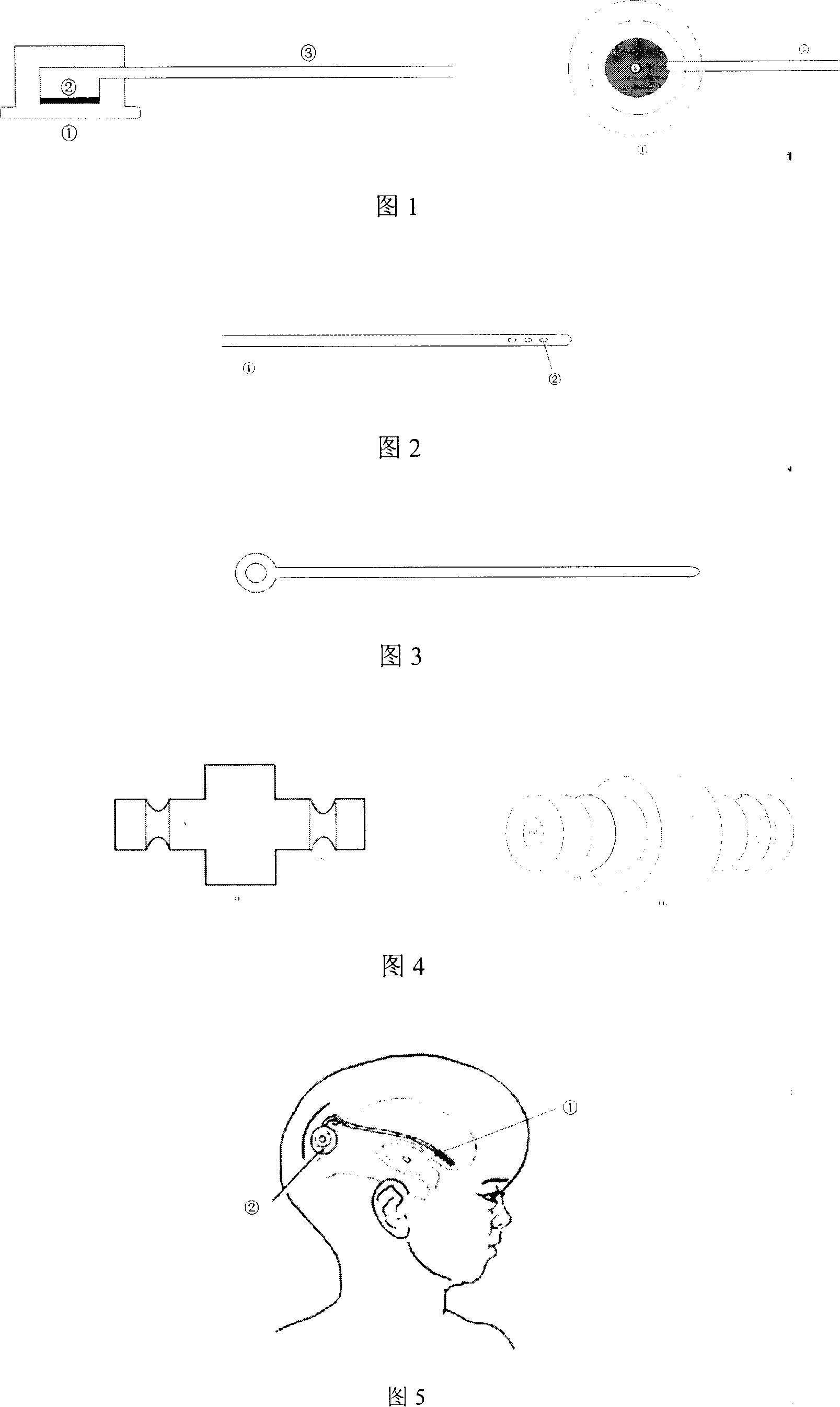Subcutaneous embedding type ventricle external drainage bursa
A ventricle and scalp technology, applied in the field of shunt devices, can solve problems such as shunt system obstruction, achieve the effect of solving increased intracranial pressure and avoiding complications of conventional shunt operations
- Summary
- Abstract
- Description
- Claims
- Application Information
AI Technical Summary
Problems solved by technology
Method used
Image
Examples
Embodiment Construction
[0012] Instructions:
[0013] 1. According to different conditions, choose different ventricle puncture points.
[0014] 2. Cut the scalp, and use the mastoid retractor to separate the incision after hemostasis to expose the skull.
[0015] 3. Use a cranial drill to drill a small hole in the skull, use bipolar electric coagulation to stop bleeding and cauterize the dura mater. Use a sharp knife to open the dura mater and cauterize it with bipolar electric coagulation to form a small hole of 3×3mm.
[0016] 4. Use the guide needle to puncture the ventricle with the intracranial end of the ventricular shunt tube, control the puncture distance according to the scale on the shunt tube, until the cerebrospinal fluid flows out of the shunt tube, withdraw the guide pin, and send the shunt tube 2cm inward.
[0017] 5. Remove the mastoid retractor, embed the subcutaneous shunt sac in a suitable position under the aponeurosis next to the incision, connect the tail end of the shunt tub...
PUM
| Property | Measurement | Unit |
|---|---|---|
| Diameter | aaaaa | aaaaa |
| Diameter | aaaaa | aaaaa |
| Diameter | aaaaa | aaaaa |
Abstract
Description
Claims
Application Information
 Login to View More
Login to View More - R&D
- Intellectual Property
- Life Sciences
- Materials
- Tech Scout
- Unparalleled Data Quality
- Higher Quality Content
- 60% Fewer Hallucinations
Browse by: Latest US Patents, China's latest patents, Technical Efficacy Thesaurus, Application Domain, Technology Topic, Popular Technical Reports.
© 2025 PatSnap. All rights reserved.Legal|Privacy policy|Modern Slavery Act Transparency Statement|Sitemap|About US| Contact US: help@patsnap.com

